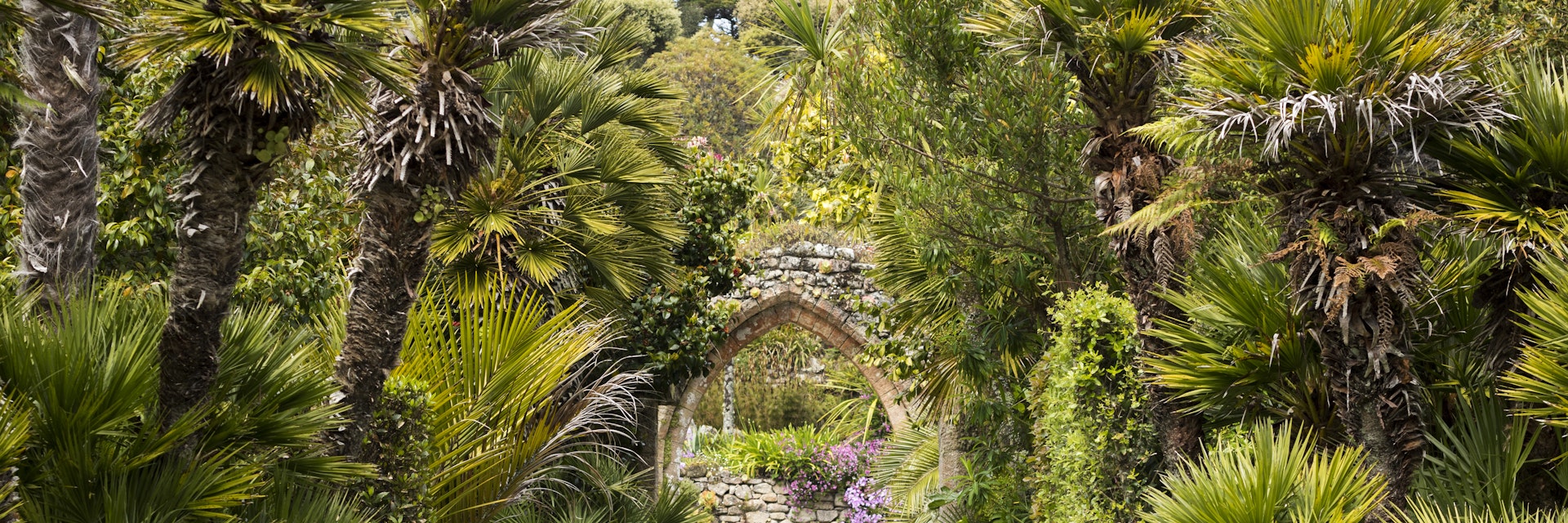Tresco's key attraction – and one of Scilly's must-see gems – is this subtropical estate, laid out in 1834 on the site of a 12th-century Benedictine priory by the horticultural visionary Augustus Smith. The 7-hectare gardens are now home to more than 20,000 exotic species, from towering palms to desert cacti and crimson flame trees, all nurtured by the temperate Gulf Stream. Admission also covers the Valhalla collection, made up of figureheads and nameplates salvaged from ships wrecked off Tresco.
Wandering round the gardens, lush with trees and brimming with colourful blooms, it's almost impossible to believe that the island was almost entirely barren when Augustus Smith arrived in 1834 as Lord Proprietor and leaseholder of all the islands. Choosing Tresco as his home, apparently thanks to its central position in the archipelago, he set about restoring the island's ruined abbey and planting the formal gardens that can be seen today.
Initially planted with gorse and laid out with terraces to provide shelter, Smith added hardy Monterey cypresses and pines which could cope with the breezy, salt-heavy conditions. Augustus Smith died in 1872, and his successors continued his grand vision, introducing new plant species collected from across the globe, from Chile to California, South Africa, Australian, Mexico, New Zealand and even the Canary Islands.
The rest of the islands reverted to ownership by the Duchy of Cornwall in 1922, but Augustus' descendants, the Dorrien-Smiths still retain their lease on Tresco and continue to live in the abbey.
On the way round the garden, you can still see a few remains of the original 12th-century abbey incorporated into the landscaping. At the southern end of the garden near the Valhalla Museum, look out for the Tresco Children sculpture by David Wynne, depicting two kids throwing another high in the air – a joyous feeling many visitors to Tresco have no doubt shared.
The garden cafe serves lunches, and there's a shop for souvenirs and plant sales.


